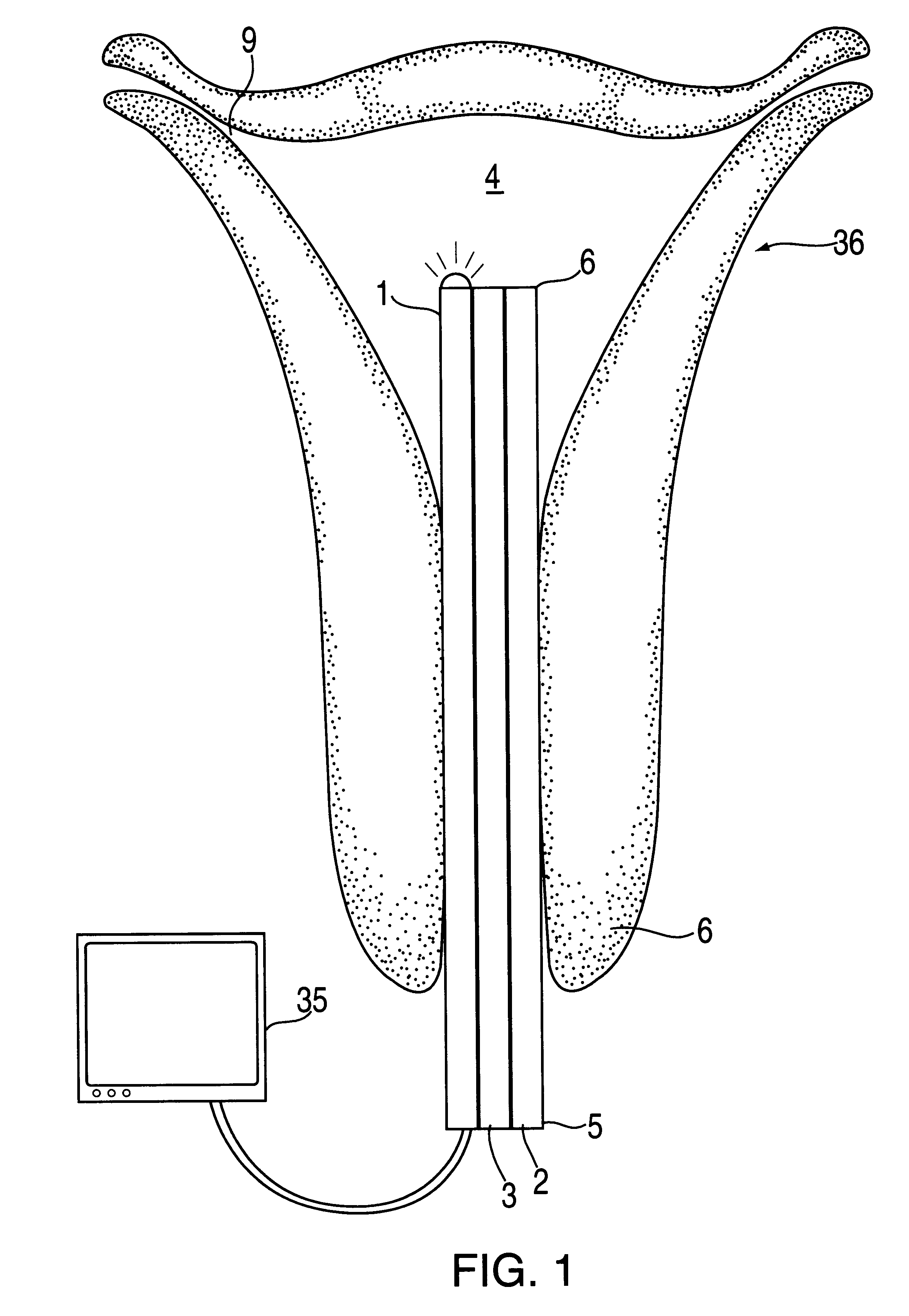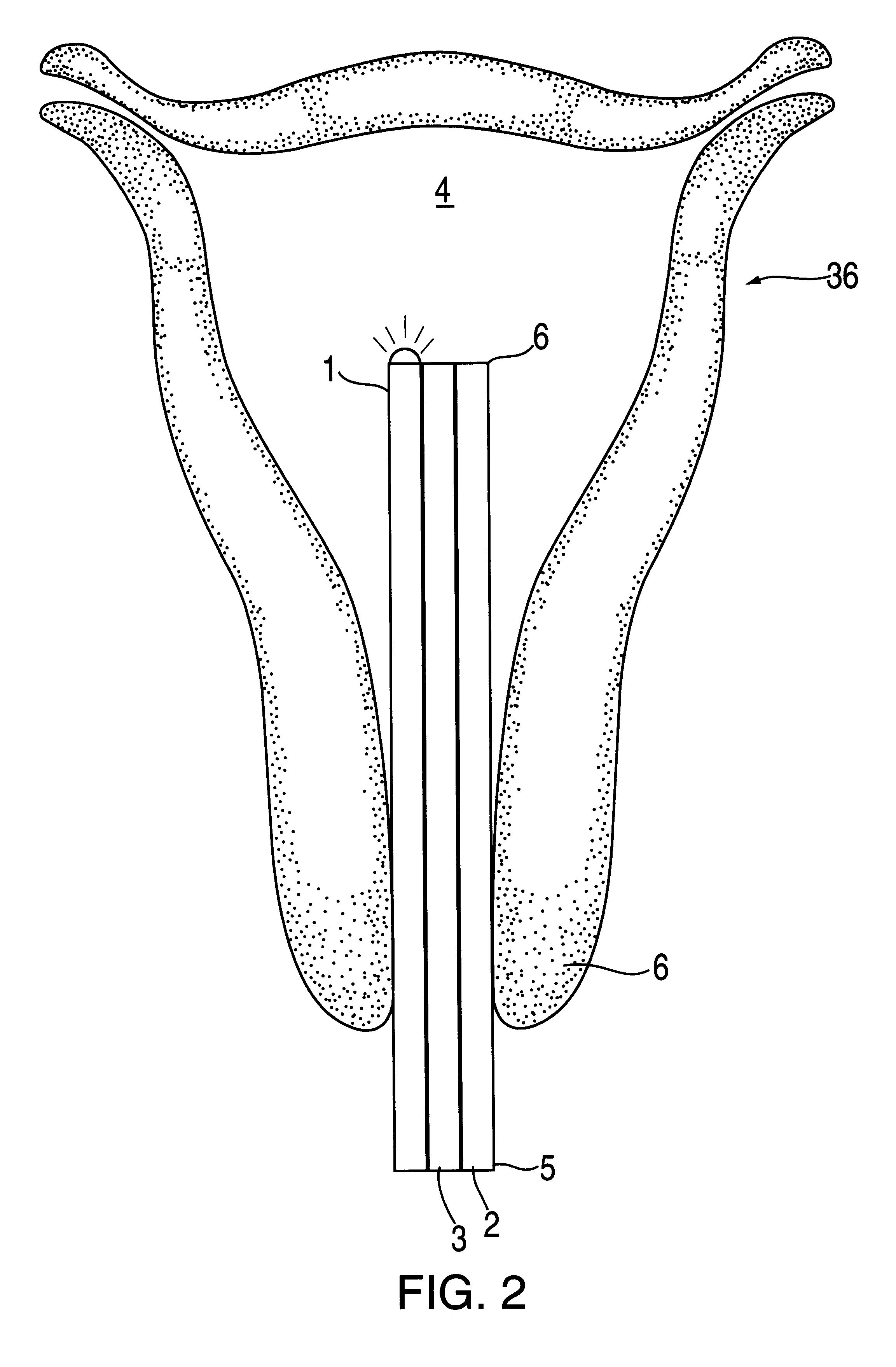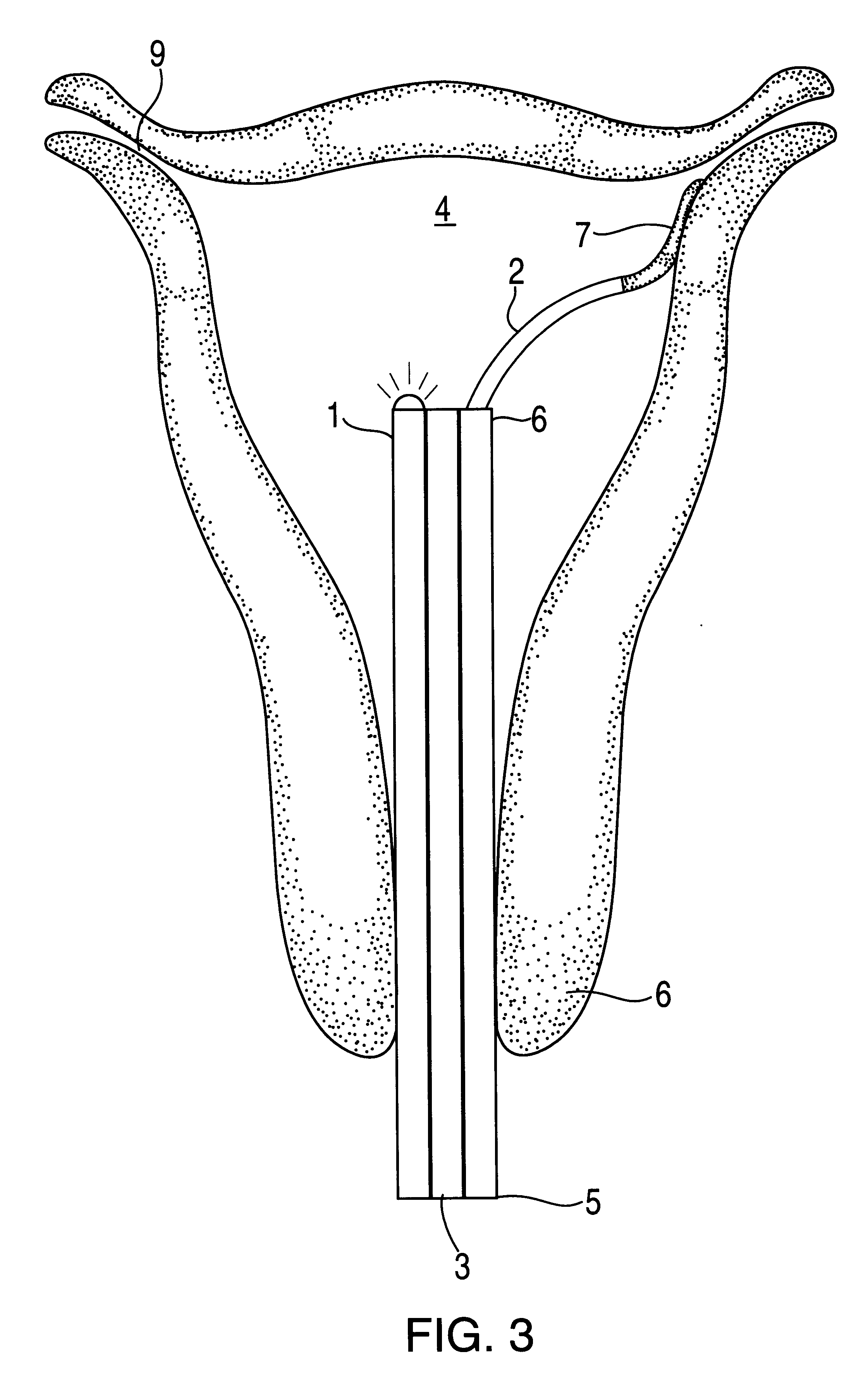Intrauterine chemical cauterizing method and composition
a technology of intrauterine chemical cauterization and uterus, which is applied in the field of endometrial mucosa of the uterus, can solve the problems of difficult and dangerous internal manipulation of a laser hysteroscope within the uterus of a patient, and the risk of tissue layers beneath the endometrium being burned through the entire thickness, so as to achieve safe and effective
- Summary
- Abstract
- Description
- Claims
- Application Information
AI Technical Summary
Benefits of technology
Problems solved by technology
Method used
Image
Examples
Embodiment Construction
The cauterization procedure is preceded by screening against cancer of the affected region and physical condition within established norms. A PAP smear and endometrial biopsy / curettage must exclude cancer or precancerous lesions of the uterus and cervix. If a fibroid uterus is present, an ultrasound should exclude ovarian masses.
The patient should be post menstrual or start on gonadotropin agonist or Danazol, or the equivalent which causes reduction in bleeding and a thin endometrium, at a rate of 800 ml daily, from the 5th day of the previous menstrual period until two weeks after the procedure. The patient will undergo the procedure in the ambulatory surgery unit or out-patient facility where Valium and / or Demerol can be given intravenously if there is pain during the chemical cauterization phase of the procedure.
The hysteroscope will be inserted after a bimanual examination and speculum of the cervix. Dilation to 6 mm may be required which may necessitate a local 1% by weight lid...
PUM
| Property | Measurement | Unit |
|---|---|---|
| pressure | aaaaa | aaaaa |
| pressure | aaaaa | aaaaa |
| pressure | aaaaa | aaaaa |
Abstract
Description
Claims
Application Information
 Login to View More
Login to View More - R&D
- Intellectual Property
- Life Sciences
- Materials
- Tech Scout
- Unparalleled Data Quality
- Higher Quality Content
- 60% Fewer Hallucinations
Browse by: Latest US Patents, China's latest patents, Technical Efficacy Thesaurus, Application Domain, Technology Topic, Popular Technical Reports.
© 2025 PatSnap. All rights reserved.Legal|Privacy policy|Modern Slavery Act Transparency Statement|Sitemap|About US| Contact US: help@patsnap.com



